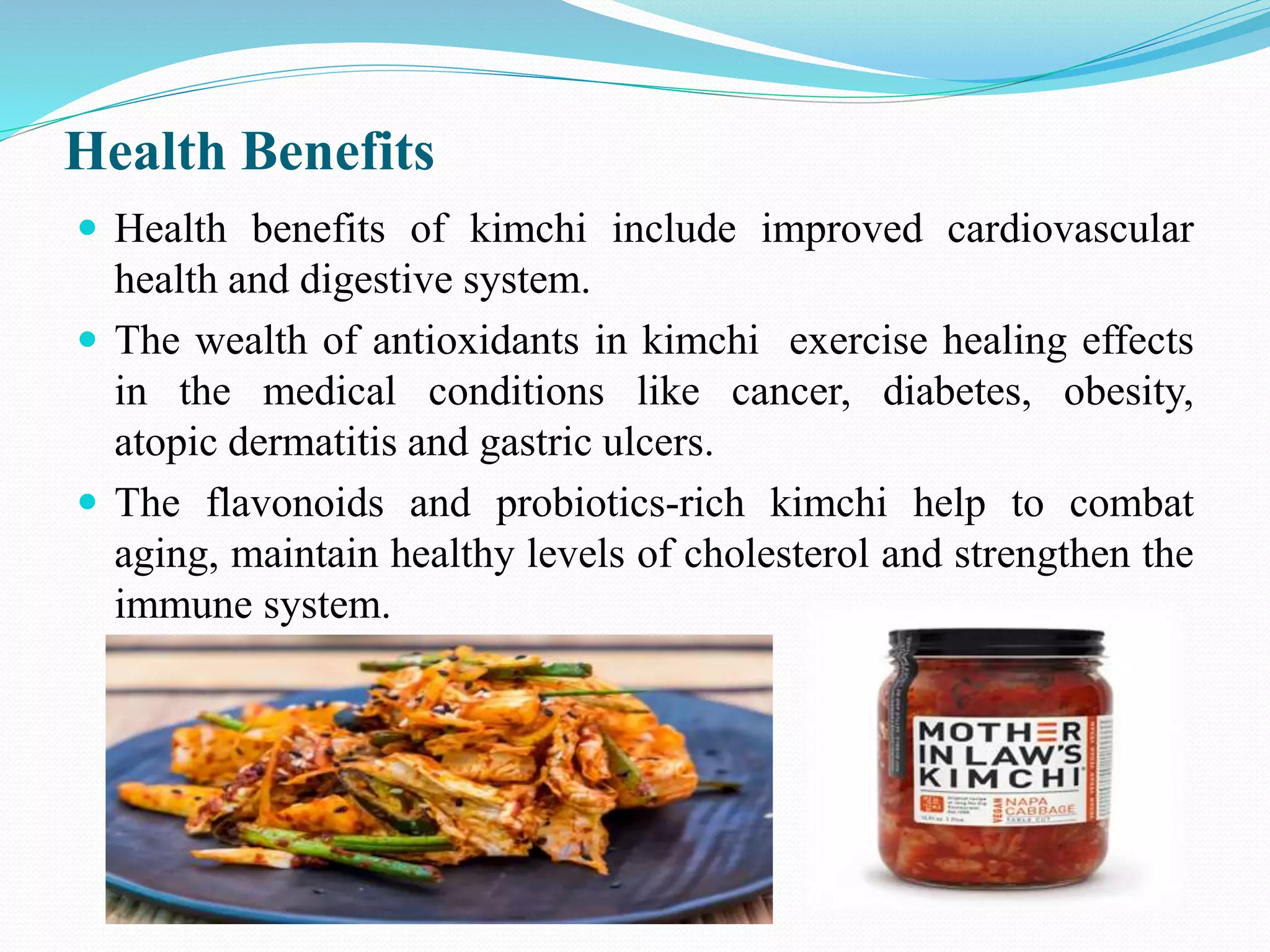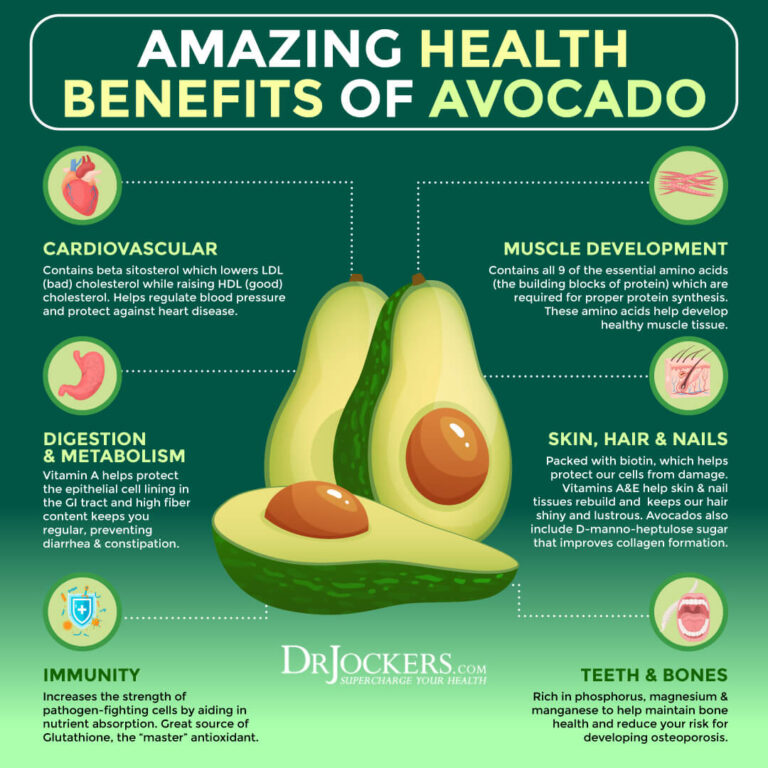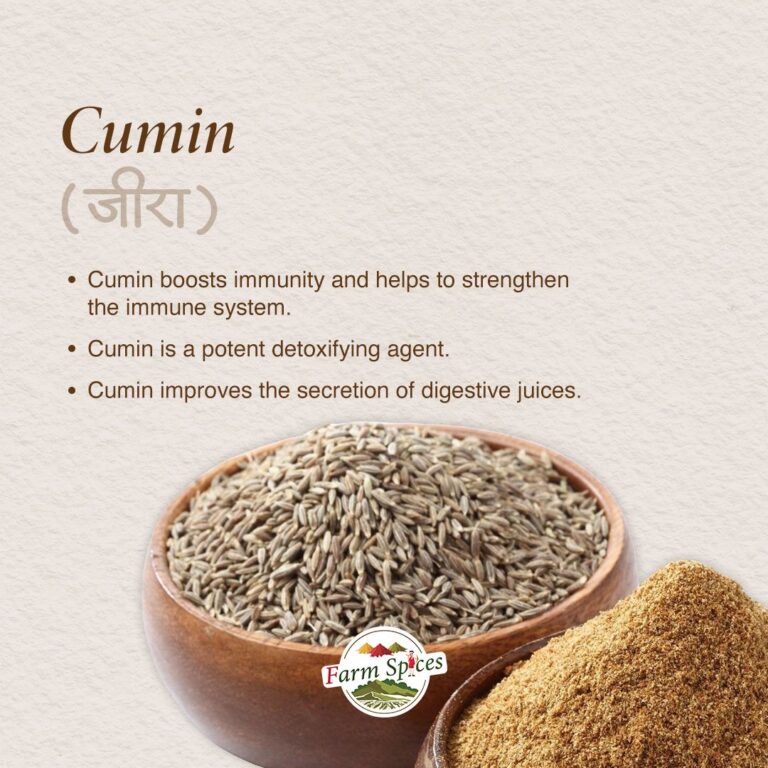Antioxidants, Anti-Aging, and Beyond: Kimchi’s Full Health Spectrum
In the vast tapestry of global gastronomy, few dishes command the reverence, cultural significance, and burgeoning scientific interest quite like Kimchi. This staple of Korean cuisine, a vibrant symphony of fermented vegetables and spices, has transcended its humble origins as a dietary necessity to emerge as a global phenomenon, celebrated not only for its audacious flavor profile but also for its profound and multifaceted health benefits. For centuries, Korean grandmothers instinctively understood its power, a wisdom now being systematically validated by cutting-edge research. Kimchi, it turns out, is far more than just a piquant side dish; it is a meticulously crafted biomechanical marvel, a living testament to the synergistic power of nature, offering a comprehensive spectrum of health advantages that extend from the foundational pillars of antioxidant defense to the frontiers of anti-aging and systemic well-being.
To truly appreciate Kimchi’s profound impact, we must embark on a journey that delves into its intricate composition, dissects its bioactive compounds, and explores the elegant biological mechanisms through which it orchestrates its health-promoting effects. This exploration reveals Kimchi not merely as a food, but as a culinary elixir, a microcosm of health designed to fortify the body against the ravages of time and modern living.
The Antioxidant Arsenal of Kimchi: A Shield Against Oxidative Stress
At the heart of Kimchi’s remarkable health profile lies its extraordinary antioxidant capacity. To understand this, we must first grasp the concept of oxidative stress. Our bodies are constantly engaged in metabolic processes that, while essential for life, also generate unstable molecules known as free radicals. These free radicals, with their unpaired electrons, relentlessly seek stability by stealing electrons from other molecules, leading to a chain reaction of cellular damage. This damage, known as oxidative stress, is implicated in a vast array of chronic diseases, from cardiovascular conditions and neurodegenerative disorders to various cancers and, crucially, the very process of aging itself.
Antioxidants are the body’s natural defense against this molecular assault. They are compounds capable of donating electrons to free radicals, neutralizing them and halting the destructive chain reactions. Kimchi is not just rich in one type of antioxidant; it is a veritable cornucopia, a complex matrix where individual compounds work in concert, often enhancing each other’s efficacy.
Let’s dissect the primary ingredients that contribute to Kimchi’s formidable antioxidant power:
-
Napa Cabbage (Baechu): The Foundation of Flavonoids and Vitamin C
The bedrock of most Kimchi varieties, Napa cabbage, is a cruciferous powerhouse. It is replete with flavonoids like quercetin and kaempferol, potent antioxidants known for their anti-inflammatory and free-radical scavenging properties. Quercetin, in particular, has been extensively studied for its ability to stabilize mast cells, reduce histamine release, and exert neuroprotective effects. Napa cabbage is also an excellent source of Vitamin C (ascorbic acid), a water-soluble antioxidant crucial for collagen synthesis, immune function, and direct neutralization of various free radicals. Furthermore, like all cruciferous vegetables, it contains glucosinolates, precursors to isothiocyanates such as sulforaphane, a compound with profound antioxidant and detoxification capabilities. -
Radish (Mu): Glucosinolates and Anthocyanins
Often included in Kimchi, radish contributes its own set of beneficial compounds. It, too, is rich in glucosinolates, further bolstering the supply of sulforaphane and other chemoprotective compounds. If red radish varieties are used, they introduce anthocyanins, pigments responsible for their vibrant color, which are powerful antioxidants known to improve cardiovascular health and exert anti-inflammatory effects. -
Garlic (Maneul): Allicin and Organosulfur Marvels
Garlic, an indispensable ingredient in Kimchi, is a pharmacological treasure trove. Its signature compound, allicin, formed when garlic is crushed, is a potent organosulfur compound with remarkable antioxidant, anti-inflammatory, and antimicrobial properties. Beyond allicin, garlic contains a spectrum of organosulfur compounds like diallyl sulfide and ajoene, as well as selenium, a trace mineral that is a crucial component of antioxidant enzymes like glutathione peroxidase. These compounds collectively contribute to garlic’s legendary ability to protect against oxidative damage and support detoxification pathways. -
Ginger (Saenggang): Gingerols and Shogaols
The pungent warmth of ginger is courtesy of its active compounds, primarily gingerols and shogaols. These phenolic compounds are potent antioxidants and powerful anti-inflammatory agents. They help to quench free radicals, inhibit pro-inflammatory enzymes like COX-2, and contribute to ginger’s well-known digestive and anti-nausea benefits. Their inclusion in Kimchi adds another layer of antioxidant defense. -
Red Pepper Flakes (Gochugaru): Capsaicinoids and Carotenoids
The iconic fiery hue and characteristic heat of Kimchi come from gochugaru, Korean red pepper flakes. These peppers are rich in capsaicinoids, especially capsaicin, which, beyond imparting spiciness, exhibit significant antioxidant and anti-inflammatory activities. Capsaicin has been shown to scavenge free radicals and modulate inflammatory pathways. Moreover, gochugaru is an excellent source of carotenoids, including beta-carotene, lutein, and zeaxanthin. Beta-carotene is a precursor to Vitamin A, another crucial antioxidant, while lutein and zeaxanthin are vital for eye health, protecting against oxidative damage to the retina. The peppers also contribute substantial amounts of Vitamin C. -
Onions and Scallions: Quercetin and other flavonoids further enhance the antioxidant profile.
-
Fermentation Byproducts: The magic of fermentation itself transforms and enhances the antioxidant potential. The lactic acid bacteria involved in Kimchi fermentation can synthesize new antioxidant compounds, enhance the bioavailability of existing ones by breaking down complex plant cell walls, and even produce bacteriocins, which have antimicrobial properties. The acidic environment created during fermentation also helps to preserve the integrity of heat-sensitive antioxidants like Vitamin C.
The true genius of Kimchi’s antioxidant profile lies in this synergy. It’s not just the sum of its parts, but the way these diverse compounds interact, potentiating each other’s effects within the complex "food matrix." This holistic approach to antioxidant delivery is far more effective than isolated supplements, offering a broad-spectrum defense against oxidative stress.
Kimchi and the Anti-Aging Imperative: Reversing the Tides of Time
The quest for longevity and vitality has driven human ingenuity for millennia. In modern science, anti-aging is not merely about extending lifespan, but about extending "healthspan" – the period of life spent in good health, free from chronic disease and functional decline. At a cellular level, aging is a complex process driven by an accumulation of damage and a decline in cellular repair mechanisms. Oxidative stress is a primary culprit, but it’s part of a larger interconnected web of aging hallmarks. Kimchi, with its rich bioactive composition, directly and indirectly addresses several of these fundamental aging pathways.
Let’s explore how Kimchi’s components combat aging mechanisms:
-
Direct Antioxidant Protection: Shielding Cellular Integrity
As detailed above, Kimchi’s vast array of antioxidants directly neutralize free radicals, mitigating oxidative damage to critical cellular components. This is paramount for anti-aging:- DNA Protection: Oxidative damage to DNA can lead to mutations, impaired gene function, and increased risk of cancer, a disease strongly associated with aging. Kimchi’s antioxidants help preserve genomic stability.
- Mitochondrial Health: Mitochondria are the powerhouses of our cells, but they are also major producers of free radicals. Oxidative damage to mitochondria impairs energy production and accelerates cellular aging. Kimchi’s antioxidants protect mitochondrial membranes and proteins, ensuring efficient energy metabolism.
- Protein and Lipid Integrity: Oxidative damage to proteins can impair enzyme function and structural integrity, while lipid peroxidation can compromise cell membrane fluidity and function. Kimchi helps maintain the structural and functional integrity of these macromolecules.
- Telomere Preservation: Telomeres are protective caps at the ends of our chromosomes, shortening with each cell division. Critically short telomeres trigger cell senescence (aging cells that stop dividing) and are a hallmark of biological aging. Oxidative stress accelerates telomere shortening. By reducing oxidative stress, Kimchi contributes to telomere maintenance, potentially slowing cellular aging.
-
Combating Inflammaging: The Silent Driver of Senescence
One of the most insidious aspects of aging is chronic, low-grade systemic inflammation, often termed "inflammaging." This persistent inflammatory state contributes to insulin resistance, cardiovascular disease, neurodegeneration, sarcopenia (muscle loss), and a general decline in organ function. Kimchi is a potent anti-inflammatory food due to:- Capsaicin and Gingerols: These compounds directly inhibit pro-inflammatory enzymes (e.g., COX-2) and reduce the production of inflammatory cytokines (e.g., TNF-α, IL-6).
- Allicin and Sulforaphane: These organosulfur compounds modulate immune responses and suppress inflammatory signaling pathways.
- Probiotics and SCFAs: The beneficial bacteria in Kimchi (Lactobacillus species) and the short-chain fatty acids (SCFAs) they produce (especially butyrate) play a crucial role in maintaining gut barrier integrity. A healthy gut barrier prevents the leakage of bacterial toxins (LPS) into the bloodstream, which is a major trigger for systemic inflammation. By fostering a balanced gut microbiome, Kimchi reduces the inflammatory burden on the body.
-
The Gut-Brain-Skin Axis and Anti-Aging: A Holistic Approach
The interconnectedness of our body systems is nowhere more evident than in the gut-brain-skin axis. Kimchi’s impact on this axis offers profound anti-aging benefits:- Skin Health (External Manifestations of Aging): The skin is often the first visible indicator of aging, marked by wrinkles, loss of elasticity, and hyperpigmentation, largely driven by oxidative stress, inflammation, and collagen degradation.
- Antioxidant Protection: Kimchi’s carotenoids (beta-carotene, lutein, zeaxanthin), Vitamin C, and other antioxidants protect skin cells from UV-induced damage and environmental pollutants, which are major accelerators of skin aging.
- Collagen Preservation: Vitamin C is essential for collagen synthesis. By providing ample vitamin C and reducing collagen-degrading enzymes through anti-inflammatory action, Kimchi helps maintain skin firmness and elasticity.
- Hydration and Barrier Function: A healthy gut microbiome, fostered by Kimchi, can influence skin hydration and barrier function, potentially reducing dryness and sensitivity. Some studies suggest probiotics can even mitigate inflammatory skin conditions like acne and eczema, indirectly contributing to a youthful complexion.
- Circulation and Radiance: Capsaicin can improve microcirculation, potentially contributing to a healthy skin glow.
- Cognitive Function (Brain Aging): Neurodegeneration and cognitive decline are significant concerns in aging. Kimchi addresses this through:
- Neuroprotection: Antioxidants like sulforaphane, allicin, and gingerols cross the blood-brain barrier and protect neurons from oxidative damage.
- Anti-neuroinflammation: Chronic inflammation in the brain (neuroinflammation) is a key driver of neurodegenerative diseases. Kimchi’s anti-inflammatory compounds and gut-mediated immune modulation help to dampen this process.
- Gut-Brain Axis: A healthy gut microbiome, nurtured by Kimchi, produces neurotransmitters and influences brain chemistry. It also modulates stress responses and mood, which indirectly impact cognitive resilience.
- Skin Health (External Manifestations of Aging): The skin is often the first visible indicator of aging, marked by wrinkles, loss of elasticity, and hyperpigmentation, largely driven by oxidative stress, inflammation, and collagen degradation.
-
Metabolic Health and Longevity: Sustaining Youthful Function
Metabolic dysregulation, including insulin resistance, dyslipidemia, and obesity, are strong predictors of accelerated aging and age-related diseases. Kimchi contributes to metabolic health by:- Blood Sugar Regulation: Fiber from vegetables slows glucose absorption. Some compounds like capsaicin and allicin may improve insulin sensitivity.
- Lipid Profile Improvement: Allicin and fiber can help reduce LDL ("bad") cholesterol and triglyceride levels. Probiotics can also influence lipid metabolism.
- Weight Management: The fiber content promotes satiety. Capsaicin can subtly increase thermogenesis and fat oxidation. A healthy gut microbiome is also linked to a healthier body weight. By maintaining optimal metabolic function, Kimchi indirectly extends healthspan.
In essence, Kimchi offers a multi-pronged approach to anti-aging, addressing the core mechanisms of cellular damage, inflammation, and metabolic decline. It doesn’t promise eternal youth, but it provides a powerful dietary tool to support the body’s intrinsic ability to repair, regenerate, and resist the wear and tear of time.
Beyond Anti-Aging: Kimchi’s Full Health Spectrum
While its antioxidant and anti-aging properties are compelling, Kimchi’s health benefits extend far beyond, encompassing a comprehensive array of physiological systems and functions. It is truly a holistic food, impacting nearly every aspect of well-being.
-
Gut Health and Microbiome Modulation: The "Second Brain" and Beyond
This is arguably Kimchi’s most celebrated benefit. The human gut microbiome, a complex ecosystem of trillions of microorganisms, is now recognized as a "second brain," profoundly influencing digestion, immunity, mood, and even gene expression.- Probiotic Powerhouse: Kimchi is a naturally fermented food, teeming with beneficial lactic acid bacteria (LAB) strains, predominantly Lactobacillus plantarum, Lactobacillus brevis, and Lactobacillus sakei. These strains:
- Improve Digestion: They produce enzymes that aid in breaking down complex carbohydrates, enhancing nutrient absorption.
- Inhibit Pathogens: They produce organic acids (lactic acid, acetic acid) and bacteriocins that create an inhospitable environment for harmful bacteria, fungi, and viruses.
- Synthesize Nutrients: Some strains can synthesize B vitamins (B12, folate) and Vitamin K, crucial for various bodily functions.
- Modulate Immunity: They interact with gut-associated lymphoid tissue (GALT), influencing immune cell development and function.
- Prebiotic Effect: The abundant fiber from the cabbage and other vegetables in Kimchi acts as a prebiotic, nourishing the beneficial bacteria in the gut, further fostering a diverse and robust microbiome.
- Short-Chain Fatty Acids (SCFAs): As beneficial bacteria ferment dietary fiber, they produce SCFAs like butyrate, propionate, and acetate. Butyrate is a primary energy source for colonocytes, maintaining gut barrier integrity, and exerts systemic anti-inflammatory effects.
- Probiotic Powerhouse: Kimchi is a naturally fermented food, teeming with beneficial lactic acid bacteria (LAB) strains, predominantly Lactobacillus plantarum, Lactobacillus brevis, and Lactobacillus sakei. These strains:
-
Immune System Enhancement: Fortifying the Body’s Defenses
A staggering 70-80% of the body’s immune cells reside in the gut. Thus, a healthy gut microbiome, cultivated by Kimchi, is directly linked to a robust immune system.- Probiotic-Mediated Immunity: Kimchi’s probiotics stimulate the production of antibodies (e.g., IgA), enhance the activity of natural killer (NK) cells, and modulate T-cell responses, leading to a more balanced and effective immune system. This can reduce the incidence and severity of infections.
- Micronutrient Support: The high content of Vitamin C, Vitamin A (from beta-carotene), and other micronutrients in Kimchi directly supports immune cell function and antioxidant defense, further strengthening the body’s ability to fight off pathogens.
-
Cardiovascular Health: Protecting the Heart and Vessels
Kimchi offers several mechanisms to support a healthy cardiovascular system:- Cholesterol Reduction: Allicin from garlic and the fiber content can help lower LDL cholesterol and triglyceride levels. Some probiotic strains have also been shown to influence cholesterol metabolism.
- Blood Pressure Regulation: The potassium content in vegetables helps balance sodium levels, contributing to healthy blood pressure. Certain peptides formed during fermentation may also have ACE-inhibitory effects, further supporting blood pressure regulation.
- Anti-inflammatory and Antioxidant Effects: By reducing oxidative stress and inflammation, Kimchi helps protect blood vessel walls from damage, a key factor in the development of atherosclerosis (hardening of the arteries).
-
Cancer Prevention (Chemoprevention): A Proactive Defense
The potential of Kimchi as a chemopreventive food is a significant area of research:- Cruciferous Power: The sulforaphane and other isothiocyanates derived from glucosinolates in cabbage and radish are potent activators of Phase I and Phase II detoxification enzymes in the liver. These enzymes help to neutralize and eliminate carcinogens from the body. They can also induce apoptosis (programmed cell death) in cancer cells and inhibit angiogenesis (the formation of new blood vessels that feed tumors).
- Capsaicin’s Role: Studies suggest capsaicin may have anti-cancer properties, including inhibiting cancer cell proliferation and inducing apoptosis in various cancer types.
- Antioxidant Protection: By preventing oxidative DNA damage, Kimchi’s antioxidants directly reduce the risk of mutations that can lead to cancer initiation.
- Probiotic Modulation: A healthy gut microbiome, fostered by Kimchi, is linked to a lower risk of colorectal cancer, partly by reducing pro-carcinogenic bacterial metabolites and enhancing immune surveillance.
-
Bone Health: While not a primary source of calcium, Kimchi’s contribution to bone health is indirect but important. A healthy gut microbiome enhances the absorption of minerals like calcium and magnesium. Furthermore, by reducing chronic inflammation, Kimchi helps to mitigate bone resorption (breakdown) that can be exacerbated by systemic inflammatory states. Vitamin K, synthesized by some gut bacteria, is also crucial for bone mineralization.
-
Mental Well-being: The gut-brain axis ensures that a healthy gut translates to a healthy mind. By fostering a balanced microbiome and reducing systemic inflammation, Kimchi can positively impact mood, reduce symptoms of anxiety and depression, and support cognitive function. The production of neurotransmitter precursors by gut bacteria is a fascinating area of ongoing research.
The Art and Science of Kimchi Fermentation: A Transformative Process
The miraculous transformation of simple vegetables into Kimchi is a testament to the elegant science of fermentation. This process is not merely a method of preservation but a profound biological alchemy that enhances the nutritional profile, creates novel compounds, and unlocks the full health spectrum of its ingredients.
-
The Fermentation Process: Kimchi fermentation is primarily driven by various species of lactic acid bacteria (LAB), naturally present on the vegetables and introduced from the environment. Once the vegetables are salted (drawing out water and inhibiting spoilage microbes) and mixed with spices, they are packed anaerobically. The LAB then begin to metabolize sugars in the vegetables, producing lactic acid, acetic acid, carbon dioxide, and various other organic compounds. This creates the characteristic sour taste, crisp texture, and complex aroma of Kimchi. The pH drops, creating an acidic environment that further inhibits pathogens and acts as a natural preservative.
-
Factors Affecting Nutritional Profile: The specific health benefits and nutritional composition of Kimchi can vary significantly based on several factors:
- Ingredients: The type of vegetables (Napa cabbage, radish, cucumber, etc.), the specific spices used (garlic, ginger, gochugaru, onion, anchovy paste, etc.), and their quality all influence the final product.
- Salt Concentration: Optimal salt levels are crucial for controlling the fermentation process, selecting for beneficial bacteria, and influencing texture.
- Temperature: Fermentation temperature dictates the rate of bacterial activity and the specific strains that dominate, affecting flavor development and nutritional outcomes. Cooler temperatures lead to slower fermentation and often more complex flavors.
- Duration of Fermentation: "Fresh" Kimchi (Geotjeori) is lightly fermented, while aged Kimchi undergoes more extensive microbial activity, leading to different flavor profiles and potentially altered bioactive compound concentrations.
- Starter Cultures: While traditional Kimchi ferments naturally, some commercial producers may use specific starter cultures to ensure consistent results and specific probiotic strains.
-
Bioavailability Enhancement: Fermentation is a natural biorefinery. The LAB break down complex plant cell walls, making nutrients more accessible and digestible. This process can significantly enhance the bioavailability of vitamins (e.g., Vitamin C, B vitamins), minerals, and phenolic compounds. For instance, the conversion of glucosinolates to sulforaphane is facilitated by enzymes activated during fermentation.
-
Novel Compound Formation: Beyond enhancing existing nutrients, fermentation leads to the synthesis of entirely new beneficial compounds:
- Organic Acids: Lactic acid, acetic acid, succinic acid – contributing to flavor, preservation, and gut health.
- Bacteriocins: Antimicrobial peptides produced by LAB that inhibit the growth of pathogenic bacteria.
- Bioactive Peptides: Proteins are broken down into smaller peptides with various biological activities, including antioxidant and ACE-inhibitory properties.
- Conjugated Linoleic Acid (CLA): Some LAB strains can produce CLA, a fatty acid with potential anti-cancer and anti-obesity effects.
This intricate dance of microbes and ingredients transforms a simple vegetable medley into a functional food with an amplified health impact, underscoring the ancient wisdom of fermentation.
Conclusion: Kimchi – A Culinary Elixir, A Scientific Marvel
Kimchi, in its vibrant complexity, stands as a testament to the profound interplay between culinary tradition and scientific discovery. What was once understood through generations of empirical observation is now being meticulously unraveled by modern research, revealing a food that is not just delicious but deeply therapeutic. From its robust antioxidant defense against cellular decay to its sophisticated mechanisms for combating inflammaging and supporting systemic health, Kimchi truly embodies the principles of a functional food.
Its journey from a humble kitchen staple to a global superfood underscores a vital truth: true health often lies in the synergistic power of whole, fermented foods. Kimchi’s ability to modulate the gut microbiome, bolster immune function, protect cardiovascular health, offer chemopreventive benefits, and positively influence mental well-being paints a picture of a food that addresses the root causes of many modern ailments.
As we continue to navigate a world grappling with chronic diseases and the relentless march of time, Kimchi offers a compelling dietary solution. Integrating this ancient Korean wisdom into contemporary diets is not merely an embrace of diverse flavors; it is an adoption of a powerful, scientifically validated strategy for fostering longevity, vitality, and a comprehensive state of well-being. Kimchi is more than food; it is a celebration of life, a daily dose of defense, and a delicious promise of a healthier future.







